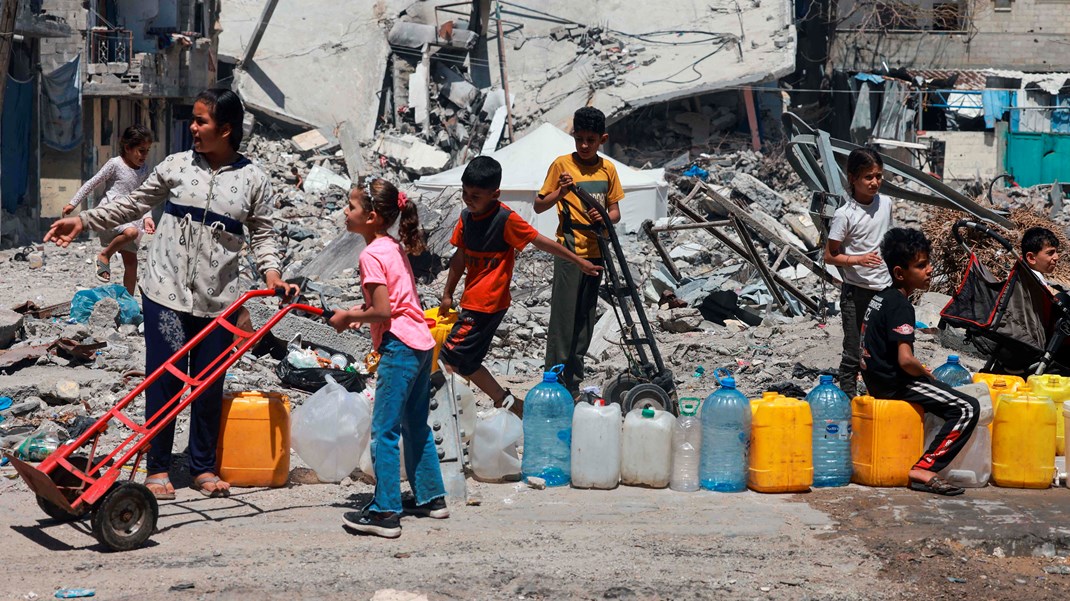Conflict and instability vastly increase cost of feeding hungry world
Summary
World Food Assistance 2017 considers the measures pursued by national, regional and international actors to respond to, prepare for and prevent food crises. In 2017 alone such crises have made 108 million people worldwide severely food-insecure. The aim is to build understanding about: i) the scale, reach and composition of these "food assistance" measures over time and space;
ii) current and emerging challenges and opportunities facing food assistance providers and participants; and iii) options for policy-making and investment to boost the relevance and impact of food assistance under the 2030 Agenda for Sustainable Development.
The report addresses three questions:
What are the levels, trends and patterns of food assistance at global, regional and national levels?
What are the primary challenges facing design and delivery of food assistance in different contexts of food system functioning?
How are these challenges being met? That is, what kinds of innovations in food assistance are being developed to address the challenges?
Three themes shape the narrative: i) food assistance at the intersection of humanitarian action and hunger reduction; ii) food assistance in food systems – the complex networks involved in producing food, transforming it and ensuring that it reaches hungry people; and iii) food assistance as a public endeavour built on many layers of commercial activity.
The portrayal and examination of food assistance thus extends well beyond the traditional view of "food aid" as transfers of food commodities to hungry people. Several other interventions that prevent hunger and address its many drivers and implications are considered. Food assistance seeks not only to save lives and protect livelihoods in the short term through in-kind food transfers, cash-based transfers, local and regional procurement of food and food system services, technical assistance measures and numerous support activities – it also seeks to combat the root causes of hunger in the medium term and long term.
Due to data limitations the report focuses on internationally facilitated food assistance as captured in the portfolio of the United Nations World Food Programme (WFP). Although WFP is the world’s largest humanitarian agency addressing hunger and nutrition, its coverage of the food assistance landscape is far from complete. Nevertheless, its coverage is global and comprehensive. An examination of key features of WFP’s food assistance portfolio is therefore highly informative of most relevant issues and contexts, and in cases where WFP is a dominant actor its view of the food assistance landscape is likely to be definitive. Future analysis will draw on data and information from other sources, especially national programmes whose collective investments in food assistance as defined here are likely to exceed those of international actors by several orders of magnitude.
Taking stock
The food assistance sector comprises a demandside – as reflected in the geographic distribution and intensity of alternative forms of food assistance – and a supply side – as reflected in expenditures on food assistance at different times and in different locations.
DEMAND FOR FOOD ASSISTANCE
The huge demand for food assistance spans numerous contexts of national income, food system performance, hunger and stability.
• Four groupings of countries emerge in terms of stability and performance: i) relatively stable high performers; ii) relatively stable low performers; iii) relatively unstable high performers; and iv) relatively unstable low performers.
• Food assistance operations are concentrated in unstable low performers, most of which are low-income countries, but with significant representation of middle-income countries.
• Several countries with relatively high performing food systems – all of them middle-income countries – also express significant demand for food assistance as a result of relatively high hunger burdens or relatively high instability.
• Some countries registering relatively strong aggregate food system performance have significant pockets of vulnerability and food insecurity, and hence also express strong demand for food assistance.
• Relatively stable countries with relatively high performing food systems express relatively more demand for technical assistance and supportive activities such as early warning and preparedness, whereas in relatively unstable countries with low performing food systems demand is greatest for broad-based measures to avert starvation and protect livelihoods; unconditional food and cash transfers are examples. Measures such as conditional food and cash transfers that address the effects of underlying flaws in food systems are relevant in most contexts.


